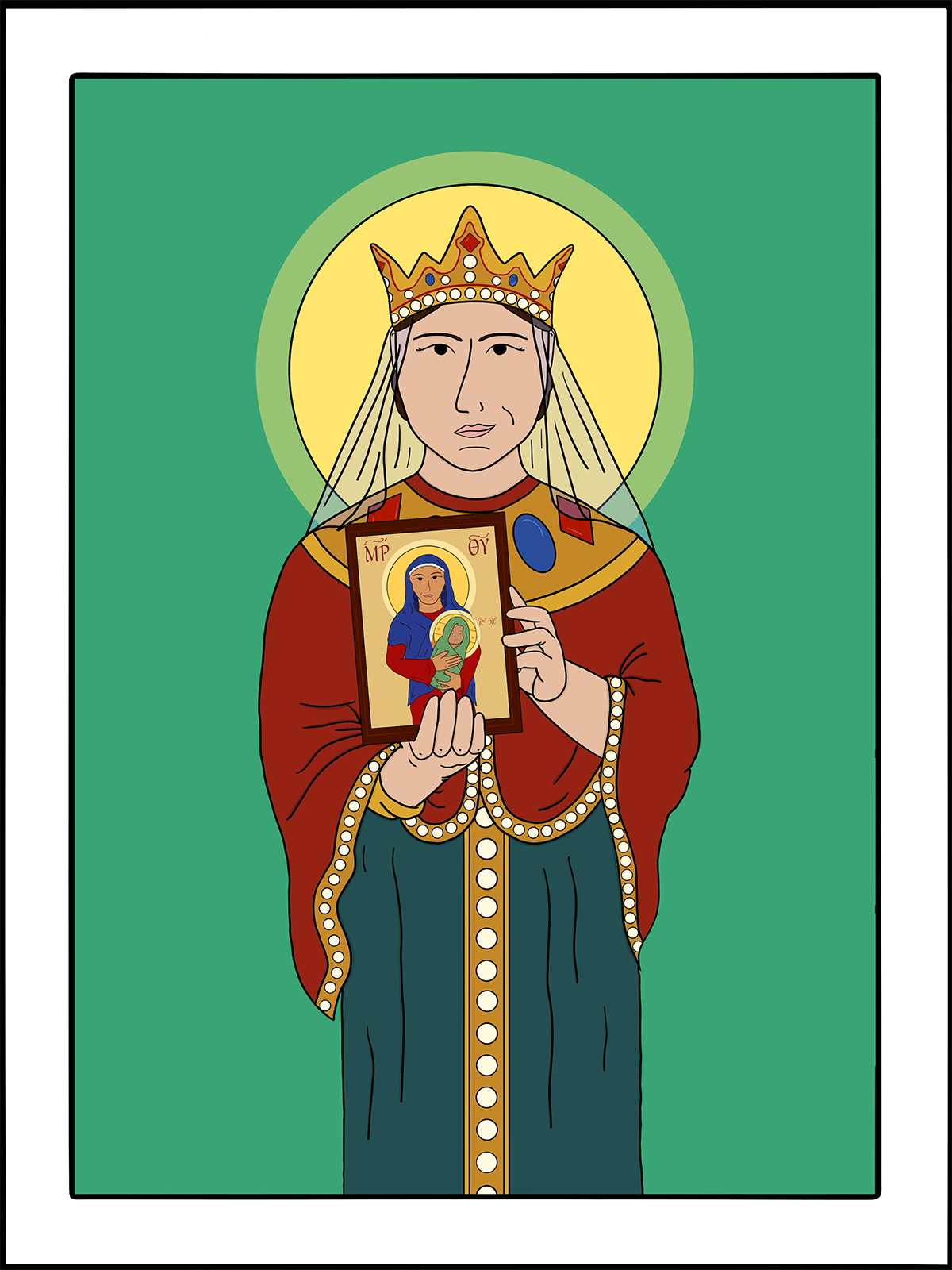
February 11
Theodora
Empress, 867
art by Rev. Kirsten Kohr of Uhrichsville, Ohio O God, who called your servant Theodora to an earthly throne that she might advance your heavenly kingdom and who gave her the wisdom to establish unity where there had been division; Create in your church such godly union and concord that we might proclaim the Gospel of the Prince of Peace, not only in correct theology but in right actions; through the same Jesus Christ our Lord, who lives and reigns with you and the Holy Spirit, one God, for ever and ever. Amen.
Theodora was a ninth-century Byzantine empress who has long been commemorated as a saint in the Orthodox Churches for her role in the restoration of icons following the iconoclastic controversy. Although in theory that conflict had been settled in favor of the veneration of icons at the Seventh Ecumenical Council in 787, in practice disagreements remained strong, and the iconoclastic party included many prominent members of society, including within the imperial family.
A young noblewoman of Armenian descent, Theodora was married to the young emperor Theophilos in the year 830. Although both were sincere Christians, the couple had strong disagreements about religious matters. Theophilos was an iconoclast and believed that the veneration of icons was idolatry. Theodora, however, maintained her own practice of venerating images in spite of her husband’s opposition. On one occasion. when a servant reported to Theophilos that his wife had been seen venerating icons, she sweetly informed him that she had merely been "playing with dolls." Two of her icons are kept in a monastery on Mount Athos to this day. where they are referred to as Theodora's dolls."
In spite of this theological conflict, the couple seem to have had a largely happy marriage, and had five daughters and two sons. Theophilos, however, died very young at the age of 29, and Theodora's life changed considerably. Her young son Michael was only a toddler and was too young to assume leadership, and so she ruled the Byzantine empire as his regent from 842 until 855.
One of Theodora's first acts as regent was to summon a synod of bishops to revisit the question of icons and iconoclasm. The practice of icon veneration was restored, and the synod ended in a procession that carried icons back into the Hagia Sophia.
Despite this victory, however, Theodora was noted for the particular gentleness with which she treated her theological opponents. She negotiated strongly with the church to ensure that her late husband would not be condemned as a heretic and pursued a moderate policy of accommodation with clergy who had been iconoclasts. This was strongly opposed by more extreme factions within the church who wanted to see them denounced and punished as heretics, but Theodora remained firm in her attitude of respect for those who had held differing opinions. This ultimately led most of the iconoclastic party to gradually accept the majority view and to remain within the church.
Theodora is therefore remembered not only for her role in restoring the veneration of icons to the church but for her firm and diplomatic insistence upon reconciliation with those who had held opposing views, which made this one theological controversy that ended in reconciliation rather than in schism.
Theodora ruled as regent until her son came of age in 855. In 857, she retired to the monastery of Gastria, and seems to have died there sometime after 867.
Excerpted directly from “Lesser Feasts and Fasts 2022,” p. 86-87.
Lessons and PsalmColossians 1:15-20
Psalm 133
John 17:20-23
Preface of a Saint (3)

